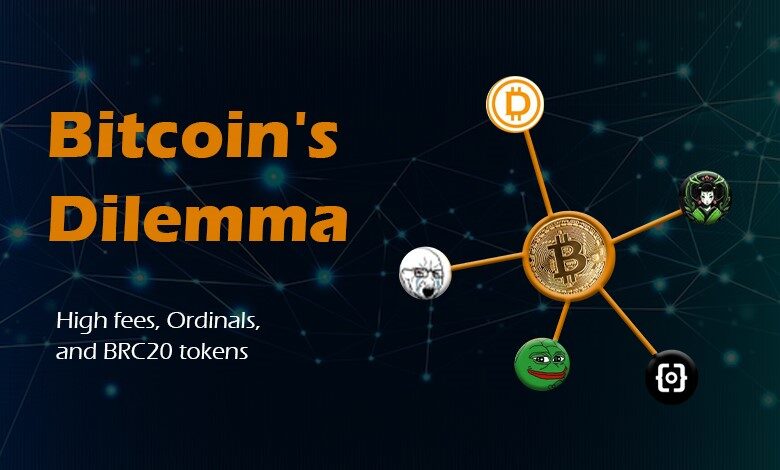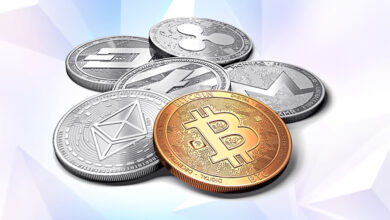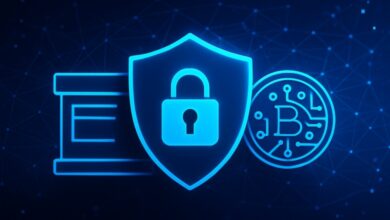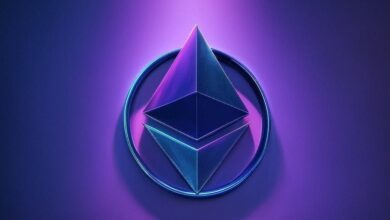Navigating the Bitcoin Network Dilemma with Ordinals and BRC-20 Tokens

The Bitcoin network dilemma has raised concerns about its future as a digital asset despite its status as the leading cryptocurrency. Recent issues with high transaction fees and the growing number of non-fungible tokens (NFTs) and other tokens, primarily BRC-20 tokens, have brought these concerns to the forefront.
The fundamental dilemma Bitcoin faces is that it cannot simultaneously function as a digital form of gold and a platform for smart contracts. Some have tried to leverage Bitcoin’s programmable features by introducing new tokens, but these tokens often lack ease of purchase, transferability, and true fungibility.
Bitcoin’s current payment model for miners relies on market demand and transaction fees rather than inflation. While this model ensures miners receive adequate compensation, it also intensifies the problem of high transaction fees and the difficulty of conducting multiple transactions simultaneously.
Bitcoin Ordinals and BRC-20 Tokens Gain Popularity
Bitcoin Ordinals are a new way to inscribe various forms of data onto individual satoshis, the smallest units of Bitcoin, similar to NFTs on other blockchains. The recent popularity of Bitcoin Ordinals can be traced back to the introduction of the BRC-20 token standard by an anonymous developer, Domo, on March 8. The Taproot soft fork paved the way for Ordinals and the BRC-20 token standard to be integrated into the Bitcoin network.
BRC-20 is a token standard that allows users to generate and issue tokens on the bitcoin blockchain similar to ERC-20 tokens on Ethereum. These tokens can represent various types of assets, including currencies, commodities, stocks, and even NFTs. Ordinals, a layer-2 protocol, powers BRC-20 tokens and aims to enhance Bitcoin’s scalability by facilitating the creation and trading of inscriptions, which are small data pieces embedded in Bitcoin transactions.
Despite its name being a nod to Ethereum’s ERC-20 standard, BRC-20 differs from ERC-20 in various aspects, primarily due to the differences between the two networks they operate on. For instance, BRC-20 tokens cannot interact with smart contracts, do not support decimals, burning, or freezing, and lack additional features like approval or delegation that Ethereum’s ERC-20 tokens have.
Bitcoin Ordinals have caught the attention of the blockchain and cryptocurrency industry due to the increasing demand for non-fungible digital assets. Traders and developers are showing significant interest in Bitcoin Ordinals.
The vast potential of Bitcoin Ordinals is evident with the creation of more than 1,600 BRC-20 tokens, including popular ones like “pepe,” “ordi,” and “punk,”. BRC-20 tokens have gained popularity in the cryptocurrency market, with a total market capitalization of over $1 billion and a trading volume of $207.7 million early this week. According to Galaxy Digital, a leading digital asset investment firm, the Bitcoin NFT market has the potential to reach $4.5 billion by 2025.
Bitcoin Ordinals have generated both excitement and controversy within the Bitcoin community. Advocates believe that Ordinals and BRC20 tokens can introduce innovative financial applications for Bitcoin. On the other hand, critics argue that Ordinals deviate from Satoshi Nakamoto’s original vision of a decentralized peer-to-peer cash system.
Bitcoin Network Congestion: Analysts Blaming Ordinals and BRC20 Tokens
The rising prominence of BRC-20 tokens has faced opposition from Bitcoin maximalists who claim that it puts undue strain on the Bitcoin network, leading to increased congestion and a surge in transaction fees.
Recently, the average number of transactions processed per block peaked at 4,373, setting a new record. The number of Ordinal Inscriptions on the Bitcoin network has increased by 92% in the first week of may, primarily due to the BRC-20 token frenzy. This has led to concerns about network congestion.
The BRC-20 protocol has led to the creation of over 8,500 tokens on Bitcoin in just a few weeks since its introduction. However, this process has also caused transaction fees on the Bitcoin network to skyrocket. While this process has increased block rewards for miners, it has also contributed to increased blockspace congestion and highlighted Bitcoin’s scalability issues.
Bitcoin is currently grappling with similar challenges that have long plagued Ethereum. These include the presence of deceptive memecoins and low-quality tokens, NFTs featuring monkey pictures that consume excessive block space, and surging transaction fees. Certain Bitcoiners on Bitcointalk and Twitter, perceive the rise of Ordinal NFTs and BRC-20 tokens as a form of attack on Bitcoin. They view it as either an exploitation of Taproot or an influx of disruptive spam congesting the network.
Enrico Rubboli, CEO of Mintlayer, a Bitcoin sidechain and scaling solution, expresses a critical stance on BRC-20 tokens, referring to them as “shitcoins” and “the latest implementation of fool’s gold, dressed up in an attractive wrapper that belies its lack of value,” as he wrote in his op-ed on May 9. Samson Mow, JAN3 CEO, see them as a silly phenomenon which brings unnecessary congestion to the bitcoin network.
However, some say that Ordinals can bring mass adoption to bitcoin and argue that Bitcoin’s self-correcting incentive system is functioning as designed, and that users just have to pay more to get their transactions included in miner blocks.
Impact on Bitcoin Network and Crypto Market
The daily transactions on the BTC network have surged to over 600,000, pushing up the cost of using the blockchain. Transaction fees reached as high as $30 on May 8 and 9, surpassing the levels seen during the peak of the 2021 bull market. There were nearly 400,000 pending transactions on the Bitcoin blockchain last week. Additionally, the total fees per block temporarily exceeded the block subsidy reward of 6.25 BTC for the first time in six years.
The impact of BRC-20 tokens and Ordinals on the Bitcoin network became apparent on May 7, when Binance, the leading cryptocurrency exchange, announced a temporary suspension of bitcoin withdrawals due to network congestion. This news caused widespread panic and frustration among users who were unable to access or transfer their funds to other platforms. Although Binance resumed bitcoin withdrawals after a few hours, the incident had already affected market confidence.
This led to a widespread sell-off as users rushed to liquidate their holdings or mitigate risks. The sell-off was further intensified by other factors, including regulatory actions by China and other countries, Elon Musk’s tweets, and financial troubles at Bitcoin, Celsius, and Terraform Labs. These events created a negative feedback loop, contributing to a further decline in bitcoin’s price.
On May 8, Bitcoin’s price fell to $27,000 and the crypto market saw net outflows of over $30 billion. Consequently, the market cap declined by 2.72% from $1.19 trillion to $1.16 trillion. The panic in the Bitcoin market also caused Ethereum’s price to decline to $1,835, reflecting a daily decrease of 3.3%. Furthermore, several altcoins experienced declines of up to 8%. As a result, the overall cryptocurrency market value decreased by 3.7% to $1.15 trillion, according to CoinMarketCap.
Is Bitcoin in Trouble?
The recent increase in the creation of Ordinals and BRC-20 tokens has sparked concerns among people who worry that it distracts from Bitcoin’s main purpose as a stable currency. Some even view this surge in network activity as a potential cyber attack. Theoretically, individuals with malicious intentions could overwhelm the network by creating large amounts of BRC-20 tokens and Ordinals, making transactions too expensive for regular users. However, such a scenario is unlikely to occur.
Presently, users are required to pay additional fees to ensure prompt transaction processing, which aligns with Bitcoin’s system design. Nevertheless, anything other than Bitcoin on the Bitcoin network is essentially unnecessary and useless.
Although bitcoin network fees skyrocketed following the heightened interest in BRC-20 tokens, the fees now appear to be returning to their pre-hype levels. Average fees for processing and confirming Bitcoin transactions, which peaked at over $30 per transaction on May 8, have significantly dropped to a mere $3.76 per transaction, as reported by Bitcoin Archive on May 15.
According to Samson Mow, congestion on the network is not a major concern. Similar periods of high congestion have occurred in the past with Bitcoin and Ethereum, but they eventually subsided as hype diminished. Users became more patient, and activities that did not require high fees shifted to lower-fee networks. While the current congestion is tied to Ordinals and BRC-20 tokens, Mow believes it will pass as those utilizing these tokens are paying substantial fees directly to Bitcoin miners, which is not sustainable in the long run. The situation resembles previous instances of congestion, such as during the block size wars, and although it may persist for a few more days or weeks, it is not a viable long-term model.
However, some proponents argue that Ordinals and BRC-20 tokens are here to stay, at least in the short term, as major wallets are already adding support for them. Recent developments, including the launch of a Uniswap fork that generated $500,000 in trading volume for “smart BRC-20” tokens (SBRC-20) within a few days, suggest the continued development of a permissionless ecosystem on Bitcoin.
If Ordinals continue to significantly impact the network, there is always the possibility of forking Bitcoin to modify or remove Taproot. While this prospect has been raised by some, it remains mostly hypothetical at this stage.
In summary, Ordinals and BRC20 have not broken Bitcoin. The network continues to evolve and address challenges. It’s crucial to stay informed and distinguish valid concerns from baseless claims.





